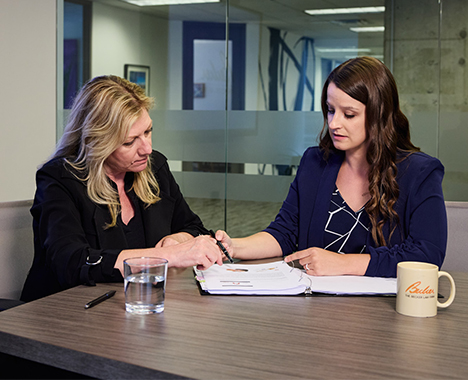Schedule a Consultation
216-621-3000Schedule a Consultation
216-621-3000
Many people are surprised to learn that a woman can have a normal pregnancy, but still run into problems at the time of delivery. Sometimes the obstetrician is forced to make a difficult decision at the time of the baby’s birth: Waiting too long could result in the baby being deprived of oxygen, resulting in brain damage, but attempting to expedite the birth, with forceps, for example, could put the infant at risk of mechanical injury. In the heat of the moment, errors can occur, and the infant can be left with a spinal cord injury. Here are the 4 most important things you should know about this type of birth injury:
In the human body, the spinal cord is protected by the vertebrae and ligaments and muscles of the spine. This protection is sufficient to withstand the stresses of a normal vaginal delivery. However, a traumatic labor and delivery can place undue traction on the spinal axis.
Injuries to a baby’s spinal cord are usually the result of mechanical trauma. This can occur during assisted deliveries where forceps or vacuum extraction is employed to help deliver the baby of a woman whose labor is not progressing. Mishandling by the obstetrician (too much pressure with the hands, for example) can also result in injury. The infant’s spinal cord can also be damaged if the head is pushed too far back or if vaginal delivery is attempted when the neck is hyper-extended. The baby’s spinal cord may be bruised or torn, partially or completely.
The Boston Children’s Hospital reports that approximately three-fourths of infant spinal cord injuries occur in the neck region. Injuries in this region of the spinal cord have more serious consequences. Infants with this type of birth injury exhibit a variety of symptoms such as:
The severity of the injury and the level at which it occurs (neck versus lower back) determine how the baby does. According to the National Institute of Neurological Disorders and Stroke, complete injuries are associated with the worst prognosis. Babies with this type of spinal cord injury are often completely paralyzed below the level of the injury. Infants with incomplete injuries, on the other hand, retain at least some movement and sensation.
Fortunately, the majority of spinal cord injuries are mild. The baby may need to be placed in a brace or other supporting device to give the spinal cord time to heal, sometimes surgery is necessary. Treatment with steroids and rehabilitation can help prevent any permanent damage.
In addition to infants, adults can also suffer from spinal cord injuries due to medical mistakes. An experienced malpractice attorney can help you determine whether any negligence occurred. Spinal cord injuries can be life-changing, not only for the patient, but also their family. Victims are often forced to spend thousands of dollars on healthcare, rehabilitation, therapy, and special equipment. The compensation from a medical malpractice lawsuit can help ease the burden.

